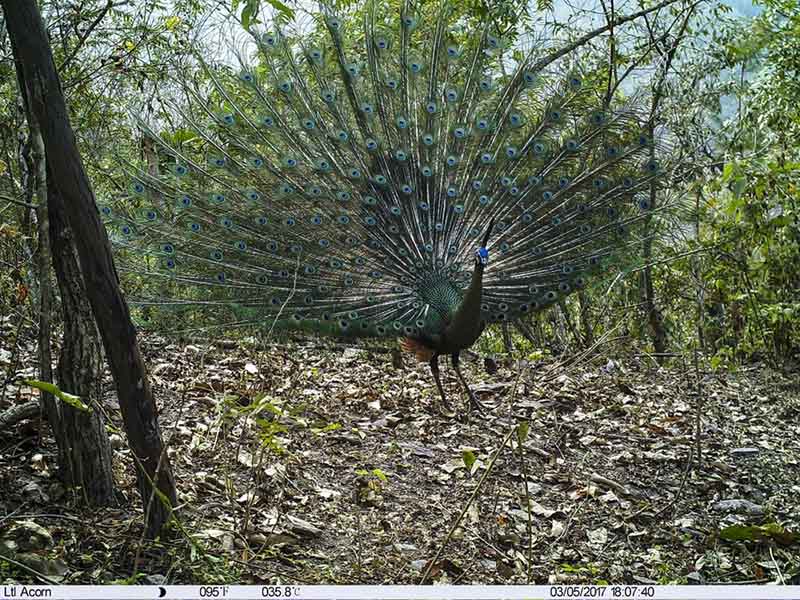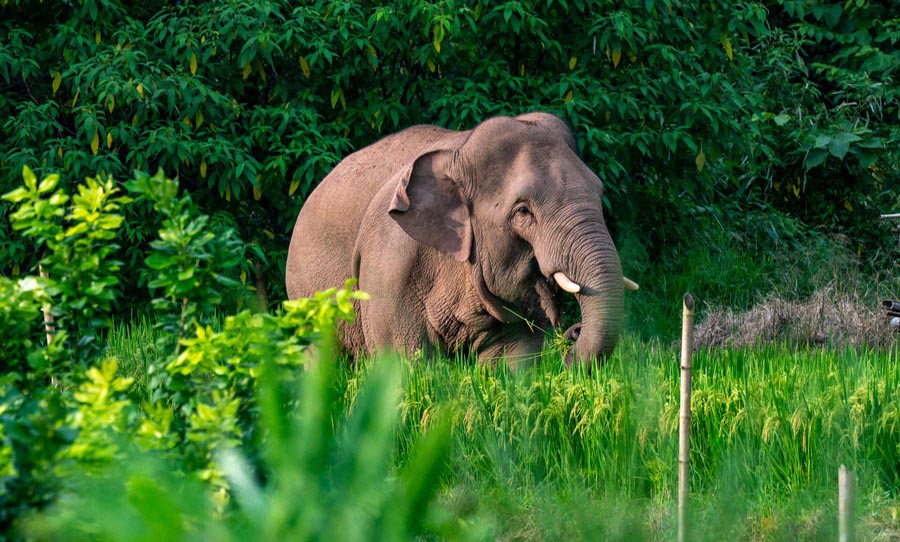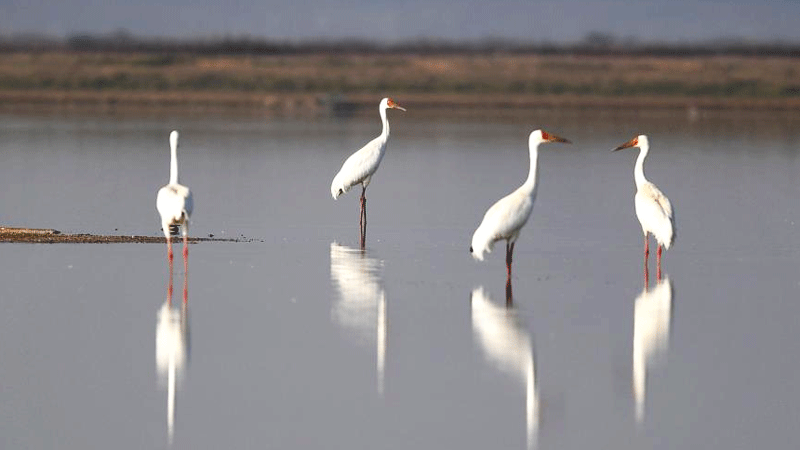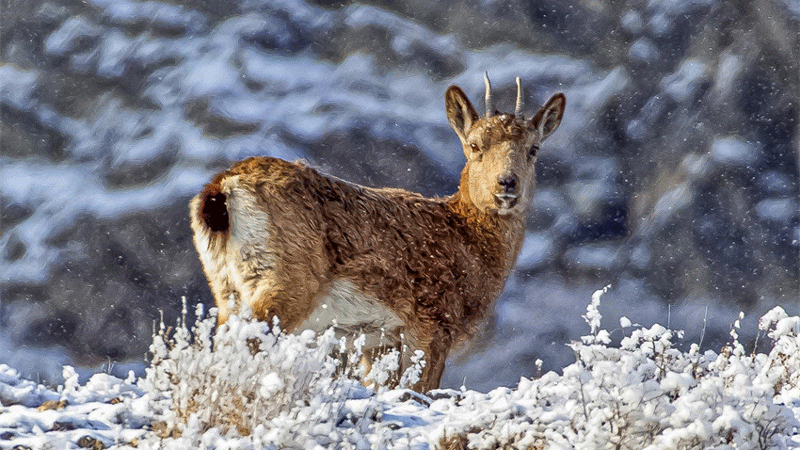Species with extremely small populations being saved in China
* Seventeen years after Yunnan first introduced the concept of Species with Extremely Small Populations (SESP), the province showcased its achievements in conserving SESP on Friday, at a side event of the COP15 to the UN Convention on Biological Diversity.
* Yunnan's conservation efforts have helped the population of Asian elephants reach around 360, and that of black-and-white snub-nosed monkeys is now 3,800.
* In 2016, researchers found 572 wild Acer yangbiense and with the aid of the new plants, a total of 50,000 new seedlings were successfully reproduced.
KUNMING, Dec. 16 (Xinhua) -- According to the Global Biodiversity Outlook 5, biodiversity is declining at an unprecedented and intensifying rate. As the most biodiverse province in China, the southwestern Yunnan shared its conservation strategy on the international stage.
Seventeen years after the province first introduced the concept of Species with Extremely Small Populations (SESP), Yunnan showcased its achievements in conserving SESP on Friday, at a side event of the 15th meeting of the Conference of the Parties (COP15) to the UN Convention on Biological Diversity in Montreal, Canada.
"We will forever lose the opportunity for future development brought by some species if they go extinct," said Yang Hua, an official with the provincial forestry and grassland administration.

This aerial photo taken on May 28, 2021 shows a herd of wild Asian elephants in Eshan County, Yuxi City, southwest China's Yunnan Province. (Xinhua/Hu Chao)
SESP was put forward by the province in 2005, as a concept to denote species that were found to be restricted in their geographic distribution and which showed weak population growth.
Ever since then, the province's conservation efforts have helped the population of Asian elephants reach around 360, and that of black-and-white snub-nosed monkeys is now 3,800.
Sun Weibang, director of the Kunming Botanical Garden, under the Kunming Institute of Botany of the Chinese Academy of Sciences, said on Friday that, during a decade of continuous development, Plant Species with Extremely Small Populations (PSESP), a term derived from SESP, was applied as a conceptual model to conserve native plants in countries such as Italy, Russia, Mexico, and Iraq.
HABITAT PROTECTION
To conserve animal SESP, project developers were asked to involve animal habitats in their planning decisions by undertaking measures such as setting up ecological corridors, and building bridges and tunnels to facilitate the dispersal of animals.
As one of the most iconic animals in the province, the green peafowl was listed as an endangered species on the International Union for Conservation of Nature's Red List, due to the rapid decline of its population, which stands at 600 in the province.

This undated file photo captured by an infrared camera shows a green peafowl in southwest China's Yunnan Province. (Yunnan provincial forestry and grassland bureau/Handout via Xinhua)
In December 2020, Yunnan's High People's Court ruled that the construction of a hydropower station on the Jiasa River should be suspended for posing possible threats to the habitat of green peafowl in the Konglonghe Nature Reserve in Shuangbai County, Chuxiong Yi Autonomous Prefecture.
This case involving the green peafowl of Yunnan was the first such case of public interest litigation in China.
Apart from green peafowl, the Asian elephant, which is also under protection as a SESP, saw a "baby boom" in nearly every elephant herd during recent years, demonstrating the success of China's arduous protection efforts -- given that the population of the Asian elephant is showing a declining trend globally.
To elevate its conservation efforts, the province developed monitoring and early-warning systems for the giant creature by synchronizing information collected by methods such as infrared cameras, video monitoring, and satellite positioning, and visualizing them on a specific mobile phone app installed on phones of villagers living nearby.
Currently, there are 11 nature reserves for Asian elephants, covering an area of nearly 5,100 square km, and the province has established around 800 hectares of "food stores" for elephants, said Wan Yong, director of the provincial forestry and grassland administration.

An Asian elephant forages near a village in Jiangcheng Hani and Yi Autonomous County of Pu'er, southwest China's Yunnan Province, Aug. 1, 2022. (Xinhua/Jiang Wenyao)
According to Wan, the Xishuangbanna Asian Elephant Rescue and Breeding Center has rescued 30 trapped, injured, or sick wild elephants in the past 20 years. China has also set up cooperative mechanisms -- such as sharing protection knowledge and technical training with neighboring countries such as Laos.
REBORN PLANT
After years of practice, Yunnan has formulated specific technical guidance for PSESP conservation, including methods such as in-situ, ex-situ, and near-situ conservation.
Before 2016, only five Acer yangbiense were discovered in Yunnan. They were found in 2001 by a Ph.D. student from the Kunming Institute of Botany, Chinese Academy of Sciences.
At that time, only two of the discovered samples were able to propagate, and this new species was thus included as one of the 20 endangered species that require immediate protection in the province's conservation plan for SESP.
The nearby Malutang Village was approached for assistance in the Acer yangbiense rescue efforts, and the village chief was tasked with ensuring protection for this plant.
With the help of the village chief, researchers from the botany institute were able to make a scientific breakthrough -- they managed to artificially breed over 1,600 seedlings.
By analyzing the genetic diversity of the artificially-germinated seedlings and the five wild plants, researchers noted that even though all the seedlings were propagated from one of the five wild plants, there was pollen present from plants other than the five plants they had discovered.
Researchers thus expanded their search for more wild Acer yangbiense, and found 572 wild plants in 2016.
With the aid of the new plants, a total of 50,000 new seedlings were successfully reproduced.
"There is no doubt that our rescue effort has demonstrated effective coordination among relevant authorities, research institutes, and local communities," said Sun.
Photos
Related Stories
- Yunnan makes great progress in protecting species with extremely small populations
- World Wildlife Conference opens in Panama with call to action at crucial moment for humanity
- China publishes Atlas of Wildlife in SW China
- China launches campaign to crack down on illegal wildlife trade
- Wild Asian elephants monitored in Yunnan
Copyright © 2022 People's Daily Online. All Rights Reserved.









